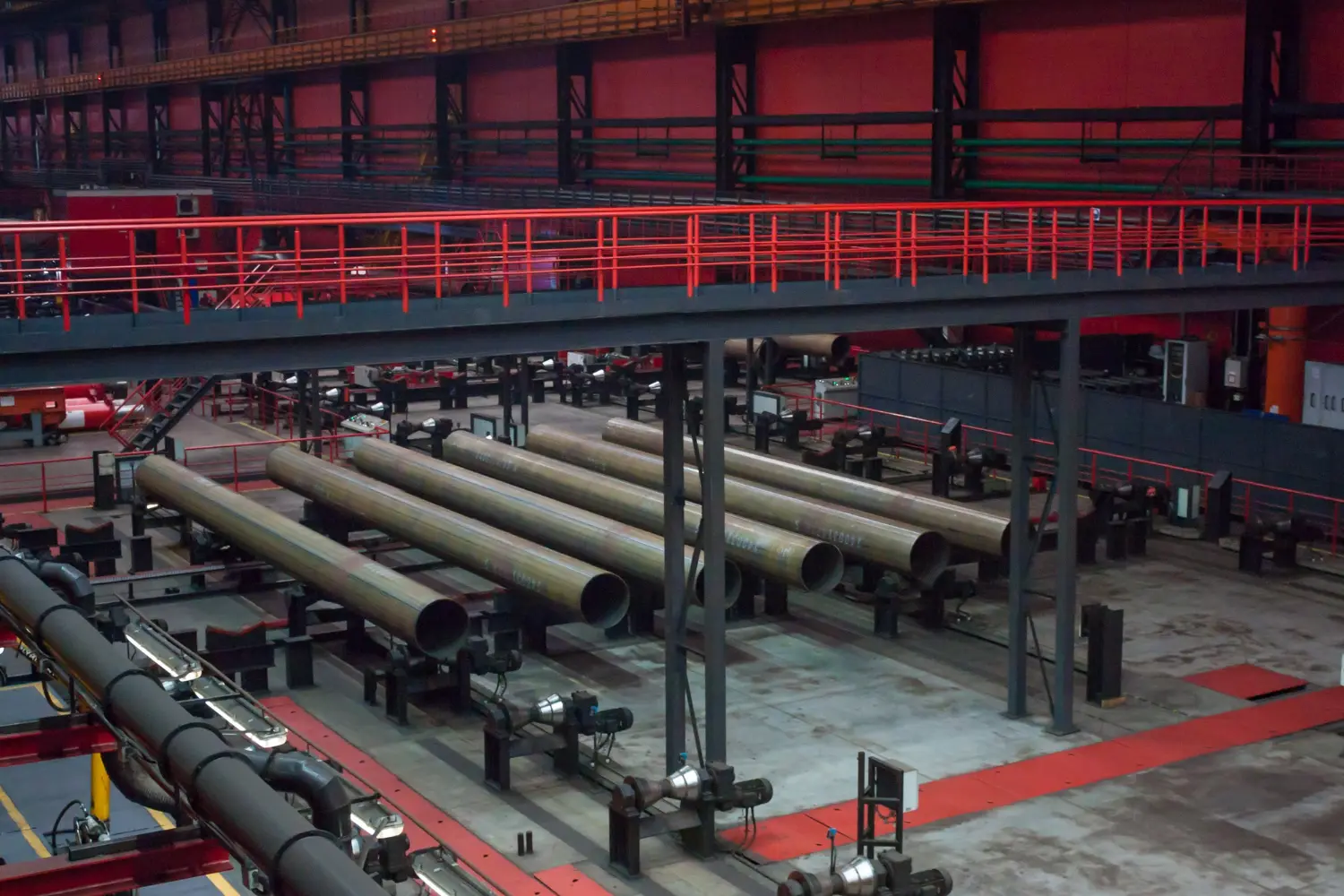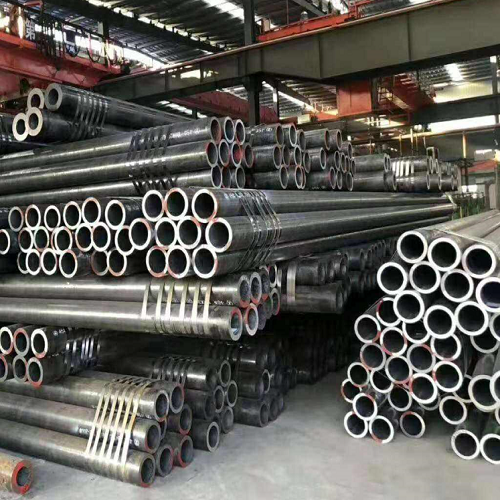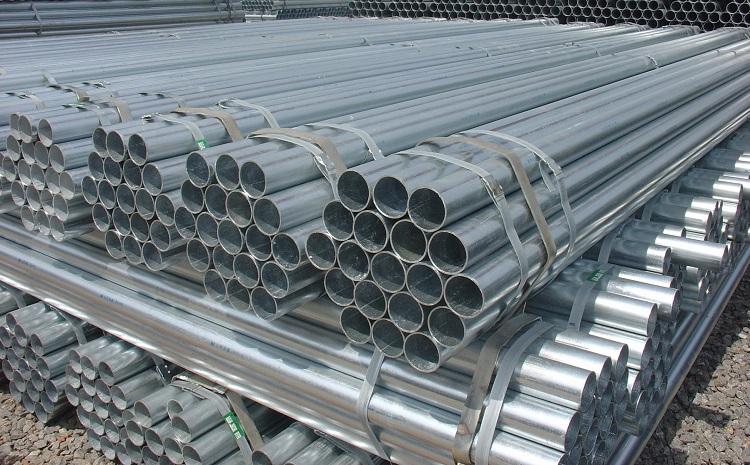We can produce and supply various specifications and materials of steel pipes.

Steel pipes can be divided into two categories according to production methods: seamless steel pipes and welded steel pipes, and welded steel tubes are referred to as welded pipes for short.
1. According to the production method, seamless steel pipes can be divided into: hot-rolled seamless pipes, cold-drawn tube, precision steel tubes, heat-expanded pipes, cold-spinning pipes and extruded pipes.
Seamless steel pipes are made of high-quality carbon steel or alloy steel, and can be divided into hot-rolled and cold-rolled (drawn).
2. Welded steel pipes are divided into furnace welded pipes, electric resistance welding (resistance welding) pipes and automatic arc welded pipes due to their different welding processes. It is round welded pipe and special-shaped (square, flat, etc.) welded pipe.
Welded steel pipes are welded by counter seams or spiral seams from rolled steel plates. In terms of manufacturing methods, they are divided into welded steel pipes for low-pressure fluid transportation, spiral seam electric welded steel pipes, direct coil welded steel pipes, electric welded pipes, etc. Seamless steel pipes can be used in various industries such as liquid pressure pipelines and gas pipelines. Welded pipes can be used for water pipes, gas pipes, heating pipes, electrical pipes, etc.

Steel pipes can be divided into carbon steel pipes, alloy steel tube, stainless steel pipes, etc. according to the pipe material (ie steel type).
Carbon tubes can be divided into ordinary carbon steel tubes and high-quality carbon structural tubes.
Alloy pipes can be divided into: low alloy pipes, alloy structural pipes, high alloy pipes, and high strength pipes. Bearing tubes, heat-resistant and acid-resistant stainless tubes, precision alloy (such as Kovar alloy) tubes and high-temperature alloy tubes, etc.
Steel pipes can be divided into two types according to the pipe end connection method: plain pipe (without thread at the pipe end) and threaded pipe (with thread at the pipe end).
The threaded tube is further divided into: ordinary threaded tube and pipe end thickened threaded tube.
Thickened threaded pipes can also be divided into: externally thickened (with external thread), internally thickened (with internal thread) and internally and externally thickened (with internal and external thread) and other ground threaded pipes.
Threaded pipes can also be divided into threaded pipes according to the thread type: ordinary cylindrical or conical threads and special threads.
In addition, according to the needs of users, the threaded pipes are generally delivered with pipe joints.
Steel pipes can be divided into black pipes (not coated) and coated pipes according to the surface coating characteristics.
Coated pipes include galvanized steel pipes, aluminum-plated pipes, chrome-plated pipes, aluminized pipes and steel pipes with other alloy layers.
Coated tubes include outer coated tubes, inner coated tubes, and inner and outer coated tubes. Commonly used coatings include plastics, epoxy resins, coal tar epoxy resins, and various glass-type anti-corrosion coating materials.

Galvanized pipe is divided into: KBG pipe, JDG pipe, threaded pipe and so on.
Classification by use
1. Pipeline. Such as: water, gas pipes, seamless pipes for steam pipes, petroleum pipelines, and pipes for oil and gas trunk lines. Agricultural irrigation faucets with pipes and sprinkler irrigation pipes, etc.
2. Pipes for thermal equipment. Such as boiling water pipes and superheated steam pipes for general boilers, superheated pipes for locomotive boilers, large smoke pipes, small smoke pipes, arch brick pipes, and high-temperature and high-pressure boiler pipes.
3. Pipes for machinery industry. Such as aerospace structural tubes (round tubes, oval tubes, flat oval tubes), automobile half-axis tubes, axle tubes, automotive tractor structural tubes, tractor oil cooler tubes, square tubes and rectangular tubes for agricultural machinery, transformer tubes and bearings. tube etc.
4. Pipes for petroleum geological drilling. Such as: oil drilling pipe, oil drill pipe (kelly and hexagonal drill pipe), drill jack, oil tubing, oil casing and various pipe joints, geological drilling pipe (core pipe, casing, active drill pipe, drill jack , by hoop and pin joints, etc.).
5. Pipes for the chemical industry. Such as: petroleum cracking pipes, chemical equipment heat exchangers and pipes, stainless acid-resistant pipes, high-pressure pipes for fertilizers, and pipes for transporting chemical media.
6. Managed by other departments. Such as: tubes for containers (tubes for high-pressure gas cylinders and general container tubes), tubes for instruments, tubes for watch cases, tubes for injection needles and medical equipment, etc.
Section shape classification
Steel pipe products have a wide variety of steel types and specifications, and their performance requirements are also various. All of these should be differentiated as user requirements or working conditions change. Generally, steel pipe products are classified according to cross-sectional shape, production method, pipe material, connection method, coating characteristics and uses, etc.
Steel pipes can be divided into round steel pipes and special-shaped steel pipes according to the cross-sectional shape.
Special-shaped steel pipes refer to steel pipes with various non-circular cross-sections.
The main ones are:
Square tube, rectangular tube, oval tube, flat oval tube, semicircular tube, hexagonal tube, hexagonal inner tube, unequal hexagonal tube, equilateral triangular tube, pentagonal plum tube, octagonal tube, convex tube, double Convex tube, double concave tube, multi-concave tube, melon-shaped tube, flat tube, diamond tube, star tube, parallelogram tube, ribbed tube, drop tube, inner fin tube, twisted tube, B Type tube, D type tube and multi-layer tube, etc.

